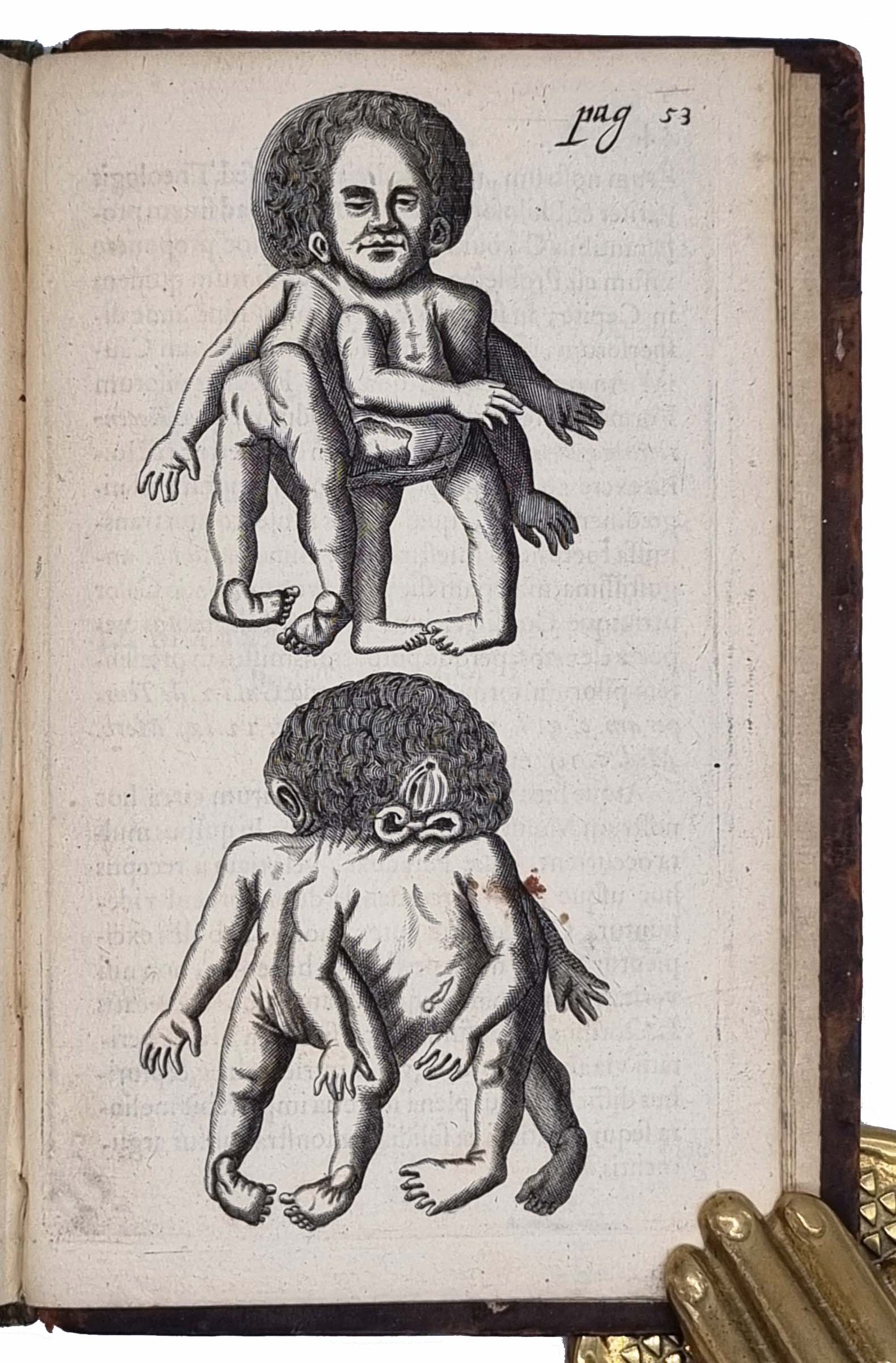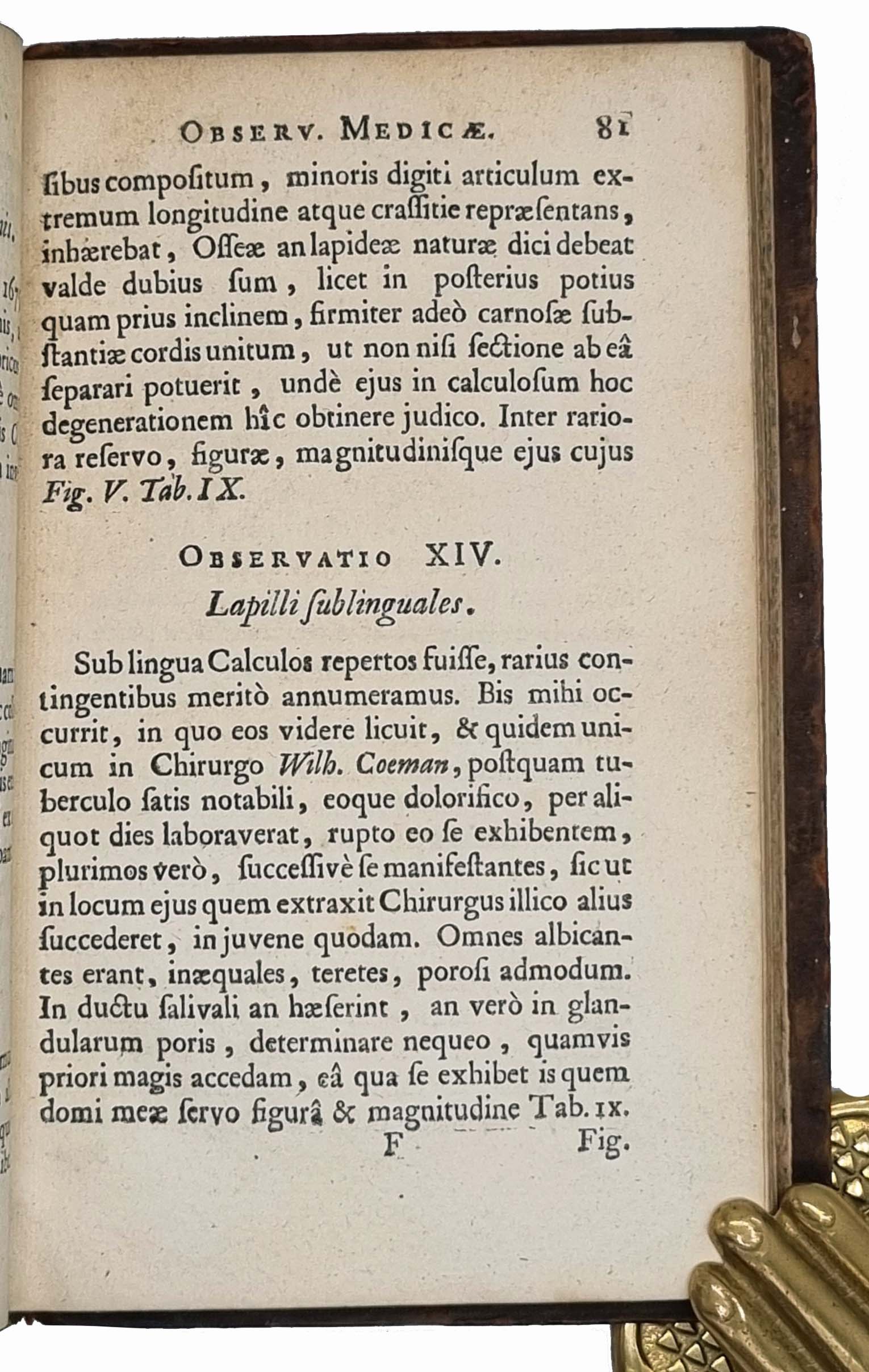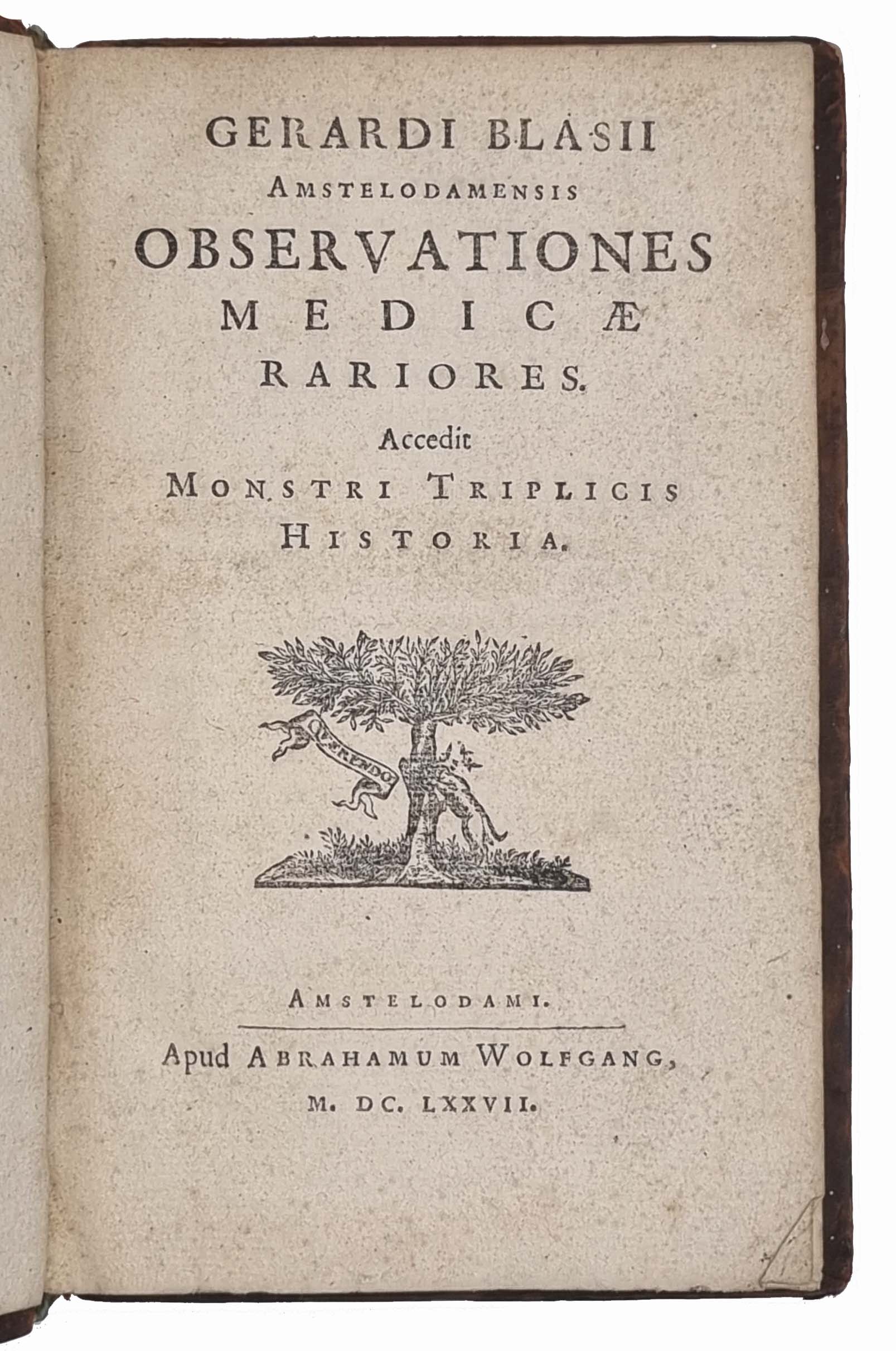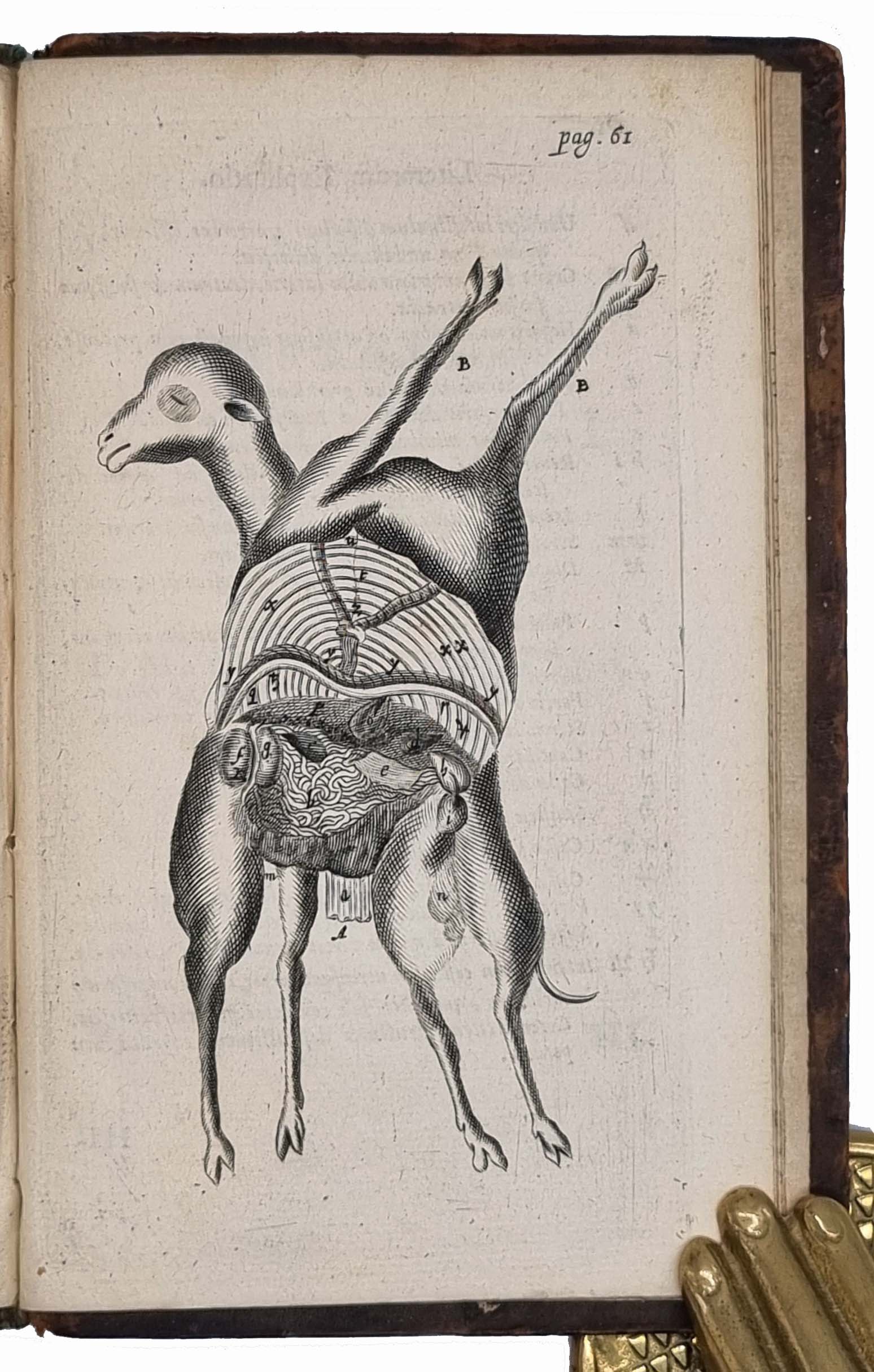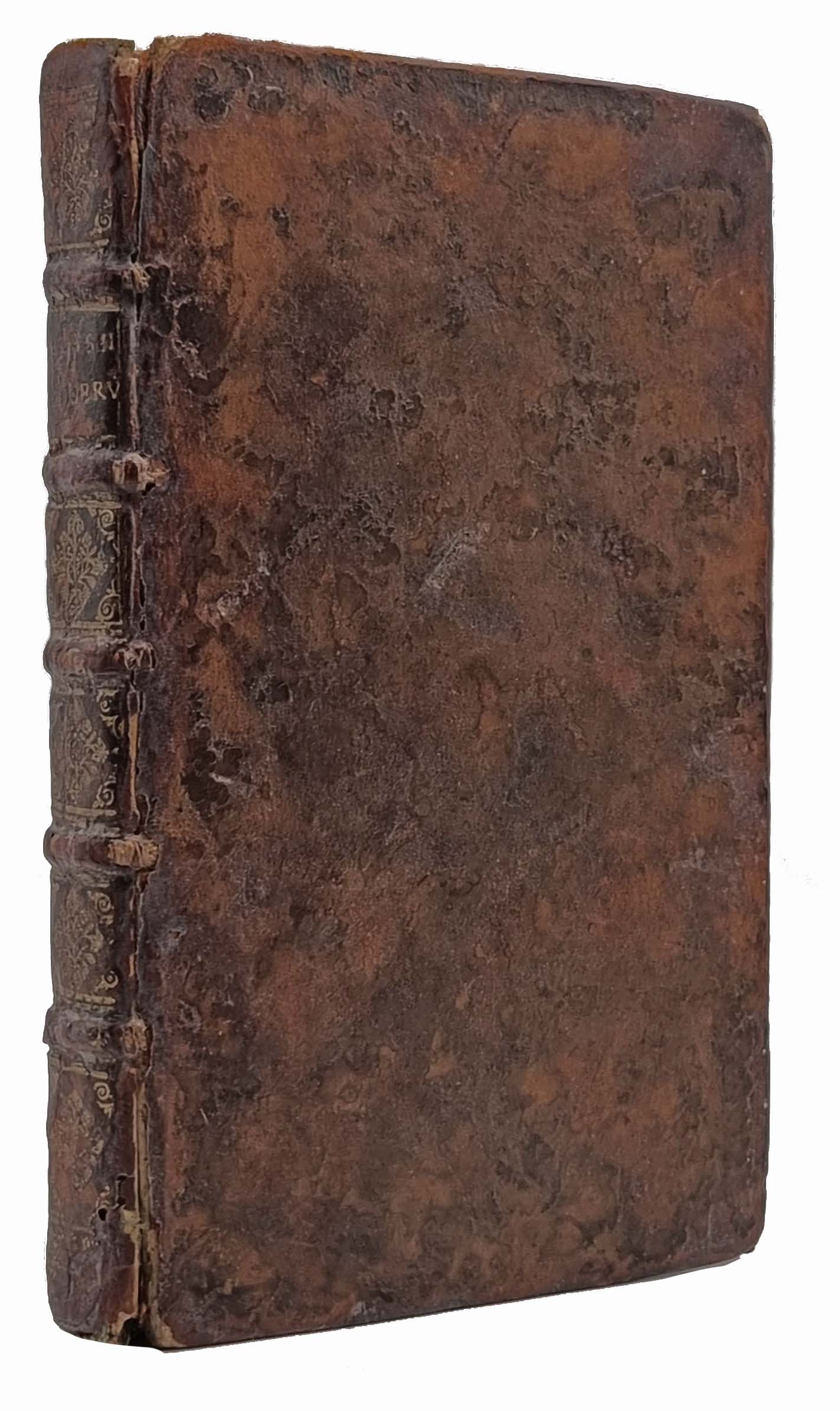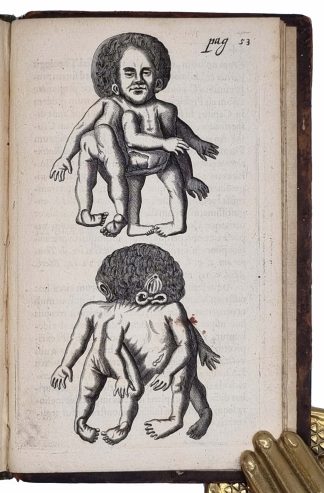BLASIUS, Gerardus.
Observationes medicae rariores
Amsterdam, Abraham Wolfgang, 1677£3,950.00
FIRST EDITION. 8vo, two parts in one, pp. (viii) 120 (iv); pp. 71 (i). Roman letter, printer’s device to t-p. 12 full-page engraved plates depicting anatomical anomalies. T-p very slightly dusty. A very good copy, crisp and clean in contemporary calf, spine with raised bands, floral gilt decoration in compartments, upper joint cracked but firm, outer edges gilt, spine, joints and corners a bit worn, a.e. sprinkled red and black.
First edition of this curious and beautifully illustrated treatise on anatomical deformities.
Blasius here presents, like a cabinet of curiosities, almost a hundred among the most uncommon and extraordinary cases – “Rariores” (“the rarest”) in the title – that he encountered during his long medical career and clinical teaching. Amsterdam was a key centre for illustrated collections of medical observations, and this is one of the richest.
A Dutch physician and anatomist, Gerardus Blasius (c. 1627-1682) became the first professor of medicine in Amsterdam in 1660. His ‘Observationes’ (Observations), often ending with the patient’s death and post-mortem, represent an unusually rich source of information on medical and anatomical practices in Amsterdam around 1670. The work is divided into in six sections: “diseases involving magnitude, such as tumors, abscesses, hernias, and dropsy; defects of figure, such as cleft palate or closed uterus; defects of the parts contained in a given place, such as prolapsed uterus (…); diseases related to number, either lack of body parts, such as the hymen, female testicles, or kidney, or presence of extranumerary parts, such as a double stomach or gallbladder; diseases of the union or cohesion of parts, such as caries or ulcers; and lastly the presence of preternatural formations, such as polyps, ossifications, and stone formations.” (Bertoloni Meli). All the engraved plates – here in clear and clean impression – include multiple illustrations of unusual or diseased anatomical structures, as well as bizarre specimens (e.g. stones shaped as spirals and pyramids, a worm found in a kidney). The only exception is Plate II, entirely dedicated to showing the corpse of a woman with an enlarged abdomen.
Blasius had extensive interests in major congenital malformations (generally referred to as “monsters”) and the study of animal anatomy, on which subjects he wrote separate works. An appendix to this volume includes the illustrated reports of three monstruous births by other contemporary physicians: “Historia infantis monstrosi” by Michael Heiland (fl. 1646-1676), a case of conjoined twins; “Historia agni monstrosi” and “Historia vituli monstrosi” by Moritz Hoffmann (1622-1698), respectively concerning a lamb born with six limbs and a two-headed calf.
STCN 097583545; Krivatsy 1350; Osler 2058; Graesse I, p. 438; Heirs of Hippocrates Online 559. Not in USTC, Brunet or Garrison-Morton. D. Bertoloni Meli, Visualizing disease. The Art and History of Pathological Illustrations (2017).
In stock


